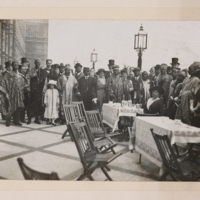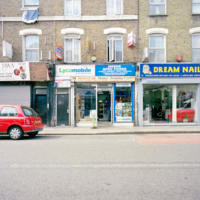
Meere Afro Foods
Letitia Kamayi: You Should Know Me
Artist’s Statement Kongo: You Should Know Me was my selfish way of learning more about my past, my ancestors through the images of my kinfolk. Unfortunately, the archive institutions I approached all asked for paperwork I could not supply; money I could not pay and questions I did not understand how to answer.
Only one missionary based in Ghent; the Sisters of Charity of Jesus and Mary, opened its doors and visual records to me and through them I was able to see a small percentage of the Congolese story before me. Though happy to have this access, I was not too overjoyed by everything I saw. There was a host of missing stories not recorded, stories that my family and friends families experienced. Chapters and verses missing from the identity of the Congolese narrative. Thus Kongo: You Should Know Me evolved to Kongo Archives.
Kongo Archives is extremely personal to me not merely because I am Congolese but also because there is a lot about my country I do not know and am searching for. I believe it is also something desperately needed, especially as our country’s political structure hangs in the global balance.
It’s a necessity even!
Culture; traditions; customs; language and pretty much everything has always been passed down orally through the stories in African customs, and now too many of those who did the passing down are fast passing away, taking with them all our history and rightful heritage. Taking away my rightful heritage, my story, my future and connection to a national identity.
It is a cliché to say, however Kongo Archives gives a voice to every Congolese person, travelling further than just those within the confines of the project. The archives is the stories of the past, the present and a storage unit where future stories can be placed when they become part of our inevitable past.
It [Kongo Archives] is here to topple the power structures of the single story of Congolese identity, working to reform the world’s understanding of, and have embedded notions questioned of a people whose stories and lives were second to the arrival of their colonial history and identity killers.
Bringing light to the stories which humanise the “so-called beasts from the dark continent” which continues till this day to suffer from decades of war and conflict whilst also being the wealthiest in natural minerals; culture and fight for peace one day.
Being Congolese I see our hidden presence in the “strangest” places, though this should not be a “strange” sight, this is the importance which representation brings! Change to people’s (and my own) opinions and views of those they are not well informed about. Kongo Archives will bring light to the multilayers of the Congolese people both residing in and out of The Motherland. It is important to have this representation to solidify the very absent Congolese presence outside of the Democratic Republic of Congo, in places such as London; Paris and Belgium as a positive display of unity; positive contribution and patriotism.
Kongo Archives aims to bring the Congolese heritage full circle through exposing the parts of our (Congolese) past and current state the world has and continues to fail to reveal. Breaking down the stereotypes of the poorest; “most dangerous place on earth to be a woman” to a country with a vast potential of peace; unconditional source of love and fight given the chance for change within its power structures.
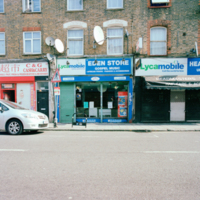
Eden Gospel
Letitia Kamayi: You Should Know Me
Artist’s Statement Kongo: You Should Know Me was my selfish way of learning more about my past, my ancestors through the images of my kinfolk. Unfortunately, the archive institutions I approached all asked for paperwork I could not supply; money I could not pay and questions I did not understand how to answer.
Only one missionary based in Ghent; the Sisters of Charity of Jesus and Mary, opened its doors and visual records to me and through them I was able to see a small percentage of the Congolese story before me. Though happy to have this access, I was not too overjoyed by everything I saw. There was a host of missing stories not recorded, stories that my family and friends families experienced. Chapters and verses missing from the identity of the Congolese narrative. Thus Kongo: You Should Know Me evolved to Kongo Archives.
Kongo Archives is extremely personal to me not merely because I am Congolese but also because there is a lot about my country I do not know and am searching for. I believe it is also something desperately needed, especially as our country’s political structure hangs in the global balance.
It’s a necessity even!
Culture; traditions; customs; language and pretty much everything has always been passed down orally through the stories in African customs, and now too many of those who did the passing down are fast passing away, taking with them all our history and rightful heritage. Taking away my rightful heritage, my story, my future and connection to a national identity.
It is a cliché to say, however Kongo Archives gives a voice to every Congolese person, travelling further than just those within the confines of the project. The archives is the stories of the past, the present and a storage unit where future stories can be placed when they become part of our inevitable past.
It [Kongo Archives] is here to topple the power structures of the single story of Congolese identity, working to reform the world’s understanding of, and have embedded notions questioned of a people whose stories and lives were second to the arrival of their colonial history and identity killers.
Bringing light to the stories which humanise the “so-called beasts from the dark continent” which continues till this day to suffer from decades of war and conflict whilst also being the wealthiest in natural minerals; culture and fight for peace one day.
Being Congolese I see our hidden presence in the “strangest” places, though this should not be a “strange” sight, this is the importance which representation brings! Change to people’s (and my own) opinions and views of those they are not well informed about. Kongo Archives will bring light to the multilayers of the Congolese people both residing in and out of The Motherland. It is important to have this representation to solidify the very absent Congolese presence outside of the Democratic Republic of Congo, in places such as London; Paris and Belgium as a positive display of unity; positive contribution and patriotism.
Kongo Archives aims to bring the Congolese heritage full circle through exposing the parts of our (Congolese) past and current state the world has and continues to fail to reveal. Breaking down the stereotypes of the poorest; “most dangerous place on earth to be a woman” to a country with a vast potential of peace; unconditional source of love and fight given the chance for change within its power structures.

Thomas Mukambilwa
Managing Director of African Support and Project Centre Mukambilwa advocates for the improvement of Congolese lives in London through educational and health events

JJ Bola
Writer, Poet, Educator, Human. Author of No Place to Call Home. Spoken word poet turned author, Bola has read and spoken internationally at TedTalks and festivals.

Vava Tampa
Founder of Save the Congo; Activist and Rhumba lover. Tampa has been advocating for peace and justice in the Democratic Republic of Congo since 2008.
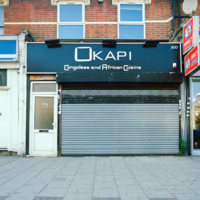
Okapi
Okapi, Congolese and African Cuisine
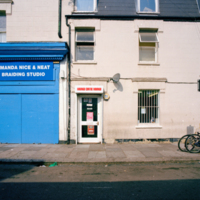
Mbongo Contre Mbongo
Mbongo Contre Mbongo, Barbers Barber name translates from Lingala/French as "Money against Money"
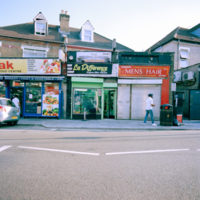
La Difference
La Difference, Barbers Barbershop name translates from French as "The Difference."

Golgotha
Golgotha, Afro-Caribbean Hair Salon, Lualua Wear
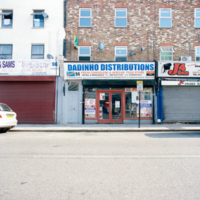
Dadinho
Dadinho, Dahinho Distributions, London Fresh Congolese and African Food Store
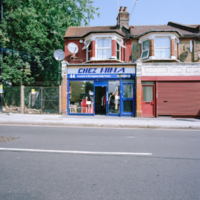
Chez Mima
Chez Mima, African Goods Store
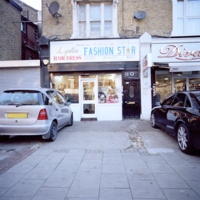
Lydia's 2 Light
Letitia Kamayi: You Should Know Me
Artist’s Statement Kongo: You Should Know Me was my selfish way of learning more about my past, my ancestors through the images of my kinfolk. Unfortunately, the archive institutions I approached all asked for paperwork I could not supply; money I could not pay and questions I did not understand how to answer.
Only one missionary based in Ghent; the Sisters of Charity of Jesus and Mary, opened its doors and visual records to me and through them I was able to see a small percentage of the Congolese story before me. Though happy to have this access, I was not too overjoyed by everything I saw. There was a host of missing stories not recorded, stories that my family and friends families experienced. Chapters and verses missing from the identity of the Congolese narrative. Thus Kongo: You Should Know Me evolved to Kongo Archives.
Kongo Archives is extremely personal to me not merely because I am Congolese but also because there is a lot about my country I do not know and am searching for. I believe it is also something desperately needed, especially as our country’s political structure hangs in the global balance.
It’s a necessity even!
Culture; traditions; customs; language and pretty much everything has always been passed down orally through the stories in African customs, and now too many of those who did the passing down are fast passing away, taking with them all our history and rightful heritage. Taking away my rightful heritage, my story, my future and connection to a national identity.
It is a cliché to say, however Kongo Archives gives a voice to every Congolese person, travelling further than just those within the confines of the project. The archives is the stories of the past, the present and a storage unit where future stories can be placed when they become part of our inevitable past.
It [Kongo Archives] is here to topple the power structures of the single story of Congolese identity, working to reform the world’s understanding of, and have embedded notions questioned of a people whose stories and lives were second to the arrival of their colonial history and identity killers.
Bringing light to the stories which humanise the “so-called beasts from the dark continent” which continues till this day to suffer from decades of war and conflict whilst also being the wealthiest in natural minerals; culture and fight for peace one day.
Being Congolese I see our hidden presence in the “strangest” places, though this should not be a “strange” sight, this is the importance which representation brings! Change to people’s (and my own) opinions and views of those they are not well informed about. Kongo Archives will bring light to the multilayers of the Congolese people both residing in and out of The Motherland. It is important to have this representation to solidify the very absent Congolese presence outside of the Democratic Republic of Congo, in places such as London; Paris and Belgium as a positive display of unity; positive contribution and patriotism.
Kongo Archives aims to bring the Congolese heritage full circle through exposing the parts of our (Congolese) past and current state the world has and continues to fail to reveal. Breaking down the stereotypes of the poorest; “most dangerous place on earth to be a woman” to a country with a vast potential of peace; unconditional source of love and fight given the chance for change within its power structures.
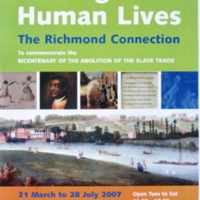
Trading in Lives: The Richmond Connection
This exhibition and education programme explored connections between transatlantic slavery and the London Borough of Richmond. This included a study of the West Indies connections in Richmond, local residents involved in abolition, and the historical presence of black people in the area. It also examined the slave forts on the coast of Ghana. 'Richmond Voices' introduced local residents who were of African or African-Caribbean descent. The accompanying booklet was written by Valerie Boyes, and produced in collaboration with the Richmond Local History Society.
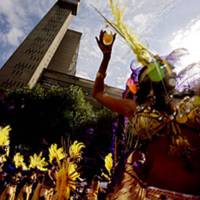
Notting Hill Carnival: Set All Free
The theme for Notting Hill Carnival in August 2007 was Set All Free, to mark the bicentenary, and to acknowledge that slavery still exists around the world. The show featured special performances to mark the bicentenary.
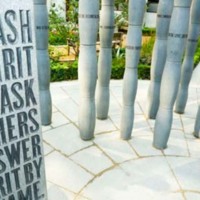
Gilt of Cain
Gilt of Cain was unveiled by the Archbishop Emeritus Desmond Tutu in Fen Court, City of London, in September 2008. The artwork, a collaboration by sculptor Michael Visocchi and poet Lemn Sissay, commemorates the abolition of the transatlantic slave trade. The granite sculpture is composed of a group of columns surrounding a podium – suggesting an ecclesiastical pulpit or slave auctioneer’s block. Extracts from Lemn Sissay’s poem, ‘Gilt of Cain’, are engraved into the granite.
Fen Court is the site of a churchyard formerly of St Gabriel’s Fenchurch St and now in the Parish of St Edmund the King and St Mary Woolnoth, Lombard St. The latter has a strong historical connection with the British abolitionist movement of the 18th and 19th centuries: Reverend John Newton, a slave-trader turned preacher and abolitionist, was rector of St Mary Woolnoth between 1780 – 1807. This project was initiated by Black British Heritage and the Parish of St Mary Woolnoth and was commissioned by the City of London Corporation in partnership with the British Land Company.
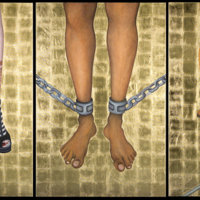
House Slave - Field Slave: A Portrait of Contemporary Slavery
'House Slave - Field Slave: A Portrait of Contemporary Slavery' was created in 2007 by Nicola Green in collaboration with Anti-Slavery International and first exhibited at Dulwich Picture Gallery. The artwork explored the concept of contemporary slavery and the stories of those still enslaved. The exhibition consisted of a large 'altarpiece' scale triptych set alongside artefacts of contemporary slavery from the International Slavery Museum and photos and text from Anti-Slavery International. It was later exhibited as part of Haringey's Black History Month at Bruce Castle Museum in 2010. The triptych is now in the permanent collection at the International Slavery Museum in Liverpool. Workshops were held at Dulwich Picture Gallery, The Prince’s Drawing Clubs, and International Slavery Museum in which students developed their skills in reading a work of art as a narrative, and responded by creating artworks that told their own personal story.
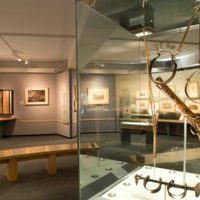
National Maritime Museum
The National Maritime Museum is the largest maritime museum in the world. It forms part of the Royal Museums Greenwich UNESCO World Heritage Site. The NMM houses ten galleries that all showcase Britain’s Maritime History. Its mission is 'to enrich people’s understanding of the sea, the exploration of space, and Britain's role in world history’. ‘The Atlantic Worlds Gallery,' launched in 2007 for the commemoration of the bicentenary, charts the interconnections between Britain, Africa and the Americas between 1600 and 1850. The gallery is about the movement of people, goods and ideas across and around the Atlantic Ocean from the 17th century to the 19th century. The connections created by these movements affected people across three continents, impacting on their cultures and communities and shaping the world we live in today. Four main themes are explored within the gallery, including exploration, war, enslavement and resistance. These displays benefited extensively from the museum's purchase of the Michael Graham-Stewart Slavery Collection in 2002. 'Atlantic Worlds' charts the triangular trade through African civilisations, enslavement and the Middle Passage, and the abolition movement. It recounts the stories of some of the people involved in the resistance movement and the campaign for the abolition of the transatlantic slave trade – including Toussaint l’Ouverture, Olaudah Equiano and Samuel Sharp whose acts of resistance and rebellion were crucial to the turning of European public opinion against the trade. Its narrative also goes beyond the achievement of legal abolition in Britain, to include discussions of the Royal Navy's involvement in suppressing the trade world wide.
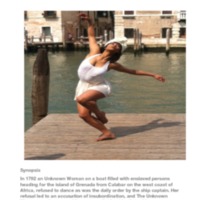
The Woman Who Refused to Dance
In Autumn 2007, the opera 'The Woman Who Refused To Dance' by composer and conductor Shirley J Thompson was performed at Westminster Palace, Houses of Parliament. The piece was based on a 1792 print by Isaac Cruickshank - entitled 'The abolition of the slave trade, or the inhumanity of dealers in human flesh exemplified in the cruel treatment of a young negro girl of 15 for her virgin modesty' - depicting a woman who refused to dance on board a slave ship, and who was hung from one leg as punishment. The opera has recently been re-premiered to mark the 210th anniversary of the abolition of the transatlantic slave trade.
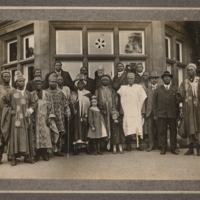
No caption [anti-slavery delegation to London?]
